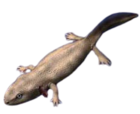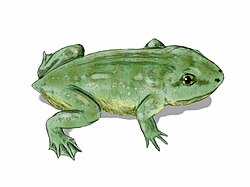| Prodesmodon Temporal range: Late Cretaceous, | |
|---|---|
| Scientific classification | |
| Domain: | Eukaryota |
| Kingdom: | Animalia |
| Phylum: | Chordata |
| Class: | Amphibia |
| Family: | † Batrachosauroididae |
| Genus: | † Prodesmodon Estes, 1964 |
| Type species | |
| Prodesmodon copei Estes, 1964 | |
| Synonyms | |
CuttysarkusEstes, 1964 | |
Prodesmodon is an extinct genus of prehistoric salamander, first described from the Lance Formation. [1]




